Kids Grocery Store Activity with Math
(and printables)
A great way to teach kids about money and math is to set up a kids grocery store activity and let them be their own bosses…complete with printables.
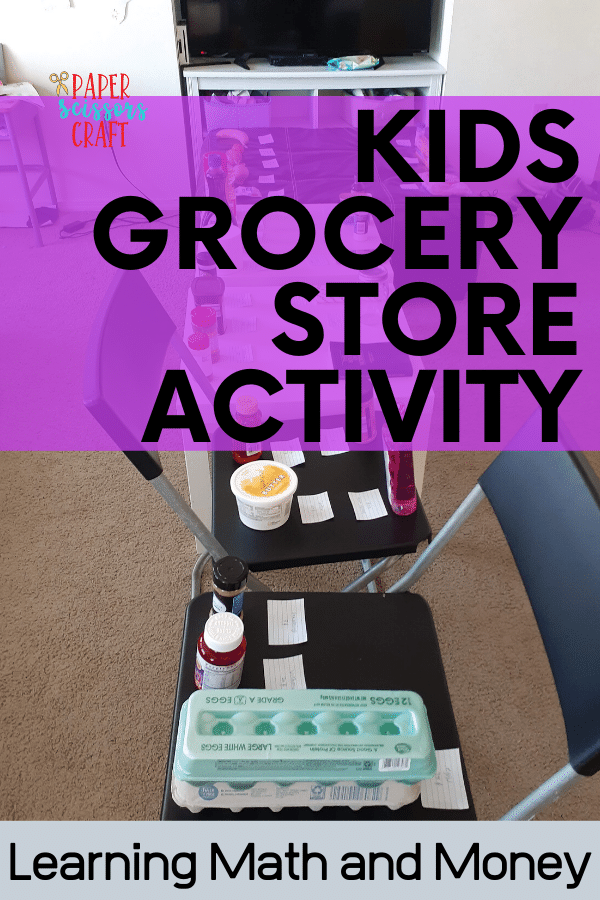
Grocery Store Math
My little girl is 6, so she is just realizing that money has value and specific numbers attached to it. It’s so funny to me when kids say: “Just pay for it with your money”. Oh, if only it were that easy, little one. We have spoken to my daughter about budgeting and how we can’t always buy things that we want because we want something else more, or we need something else.
I have been wanting to do a grocery shopping activity for a while because I used to LOVE to pretend to grocery shop as a child (I wanted to be a store manager when I was younger), and my daughter is my mini me (karma at its finest), so I knew she would love it too. She loves lists, she loves organization, and she loves to be in control. We have a manager on our hands!
We did this activity probably about 2 years ago when my daughter was 4, and she loved it, but I wanted to involved a little more teaching and education to it. I wanted to use it so she can see how money works and operates, plus using her math skills. Some simple addition and subtraction.
It was a complete success. My husband and I made little isles in the living room and pulled out our pantry to create a super market. The kids loved it. I made it more for my six year old, but my son (who’s 3) was totally into it. He didn’t care so much about the money, but he loved getting the things off the list. We played this for like 2 hours. We had to convince them to stop.
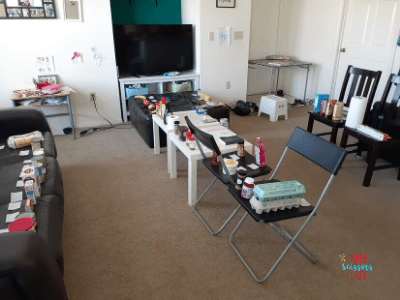
Here’s how we did it.
Side note: I put everything I made together in a grocery store activity packet that includes: Activity instructions, grocery store items, scanner, grocery shopping lists, money cheat sheets for kids, price tags, play money, and price list cheat sheet. It’s a great resource to pull this whole activity together. Takes away all the prep work for you. Check it out:
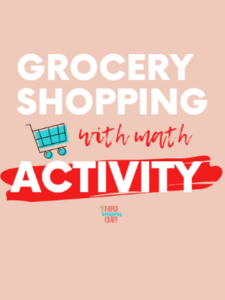
This post contains affiliate links.
Kids Grocery Store Activity
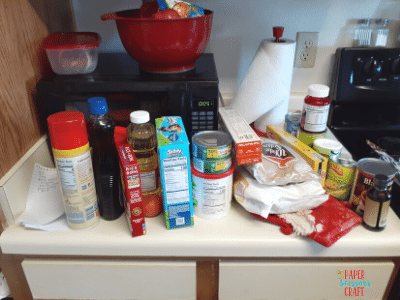
What you need:
Pantry Items (anything you’re okay getting tossed around a little bit, or if your kids have fake food…even better!)
Shopping Cart (if you don’t have one, you can use a bucket or basket. My son used his toy car)
Cash register (you could buy a fake kids cash register if you don’t have one. We used our little kids piano and our imagination)
“Scanner” (We also pretended to have a scanner. I made one in the activity packet, but we just drew one up)
Calculator (if you aren’t fast at counting, like me. Also another viable option for a cash register)
Shopping Bags (If you collect your plastic bags from the store, those are great. Or if you want, you could teach your kids to recycle and use the reusable bags)
Tables, chairs, couch, or ottoman (anything you can turn your living room, dining room, or kitchen into a grocery store)
Money (you can use real money or play money)
Price Tags (to label all the store items)
Shopping Lists
The Grocery Shopping Store Activity Packet (optional) Included in the packet: Instructions for this activity, play money, a “scanner”, money cheat sheet, price tags, price of items cheat sheet, grocery shopping lists, and grocery items.
Other items that might be useful: A money cheat sheet for the kids to see how to add up money (I made one in the packet), A cheat sheet of all the items priced out to make checkout easier.
Instructions:
First pull out all your shopping items from your pantry. Here is a long list of items you can use for ideas.
Turn your room into a grocery store. We used tables, chairs, and the furniture, and just moved them around to resemble isles.
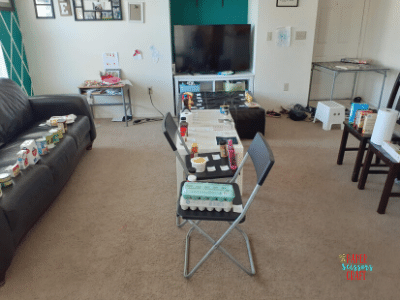
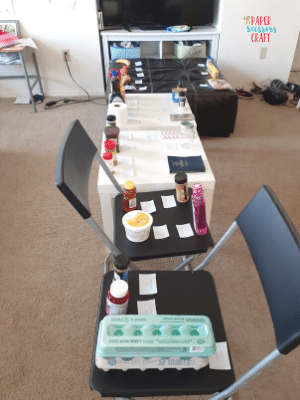
Line up your items on the isles.
Label your items with price tags. You can create your own, or use the ones included in the packet. We did anything from a penny to $1.50. We made “valuable” items more money like: Teddy Grahams, Graham crackers, and chips. Haha. (we think we’re clever).
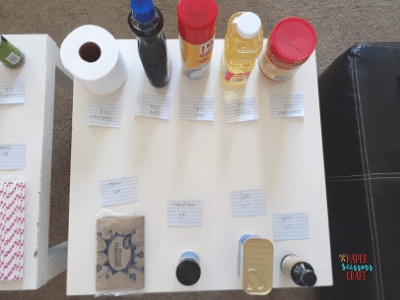
Find a separate place for the “check out”. We did our dining room table. Have a place for your “scanner”, “cash register”, and bags. It’s helpful to have a list of all the grocery items and their corresponding price so that you can access it easily at the register.
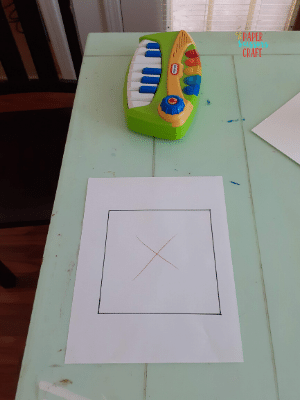
Count out some money that’s easy for your little kiddos to use and understand. We didn’t do anything more than $1.00. We had a $5.00 bill so she could see what it looks like, but we didn’t use it. Make sure you have pennies, nickels, dimes, quarters, and dollars. You can use real money, or the grocery packet has some fake money. You could also use game money like from monopoly or Life. (Make sure everyone gets the same amount!)
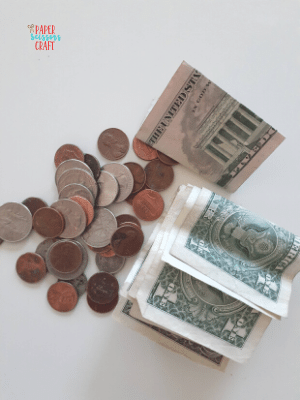
Make different shopping lists for the kids to gather items. I made sure to either have 2 of each grocery item, or I made sure each shopping list had completely different items so the kids didn’t run into having to retrieve the same item only to find there’s only one.
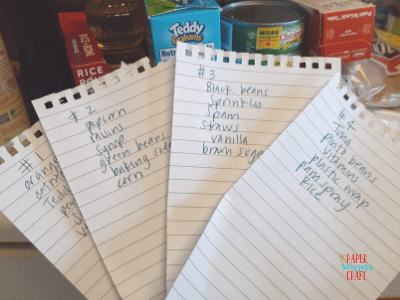
Tell the kids to get the shopping carts, grab a list and go to work.
They checked out, paid their bill, I packaged up their groceries, and they were on their way.
When the kids checked out, we used our pretend cash register and scanner. I added up all the groceries according to the price tags. I used my cheat sheet of what all the items costs so I could refer to it as I went. I gave my daughter a total, and helped her work through counting the money and, if needed, gave her change back.
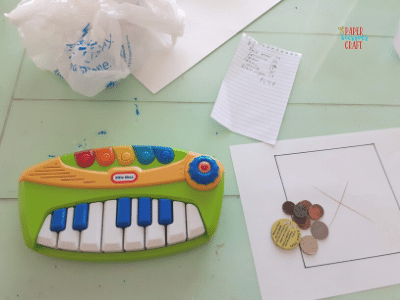
We kept a pile of bought groceries in the corner, and my husband and I took turns restocking them when we had time.
I made 10 different lists and kept rotating them until they both had used them all. I put 5-6 items on each list.
Then they wanted more. They just wanted to keep doing it.
My husband and I took turns with who did the cash register, helped restock the groceries, and helped gather items.
It was a lot of fun!
Other Ways to Learn
After using all the lists, I then gave my daughter an amount that she could spend, and she would have to add everything up as she went so she didn’t go over that amount.
We also let them take turns checking people out and adding up totals.
An even easier way to simplify this activity is to not have any price tags and just pretend to add everything up and then just make up a total.
Don’t forget to check out the Grocery Store Activity Packet to make your activity run smoothly!
Related: 9 Easy Science Experiments with Household Items
Related: Q-tip Learning Painting Sheets
Related: 10 Surprisingly Fun Activities to do with Balloons
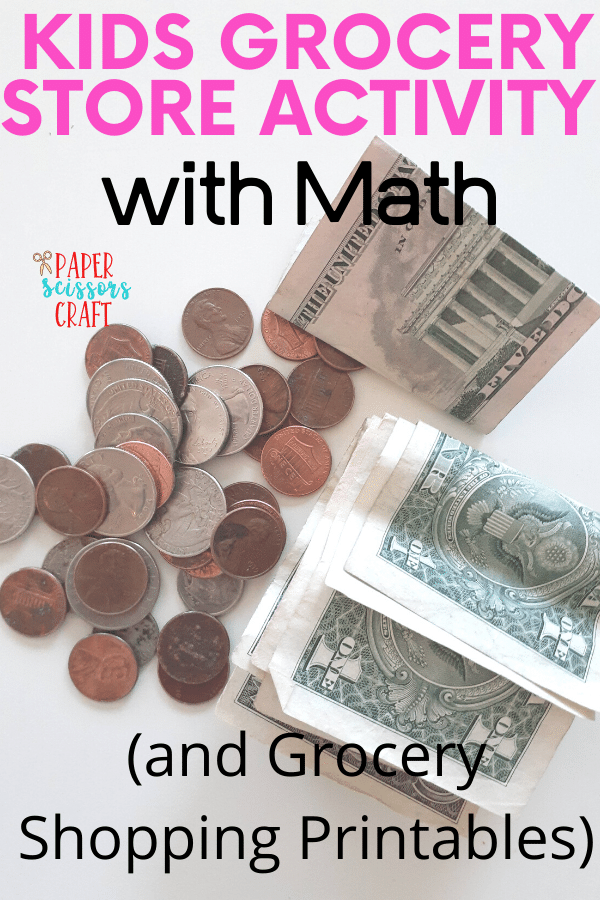

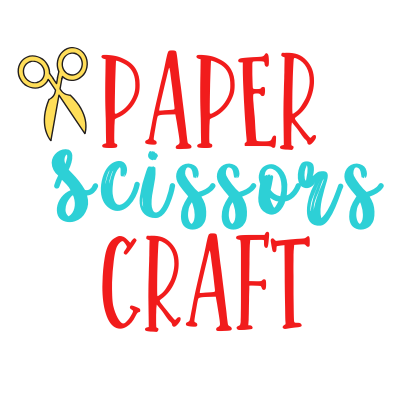
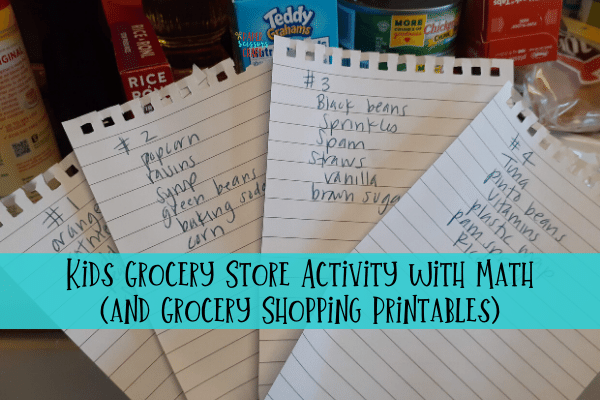

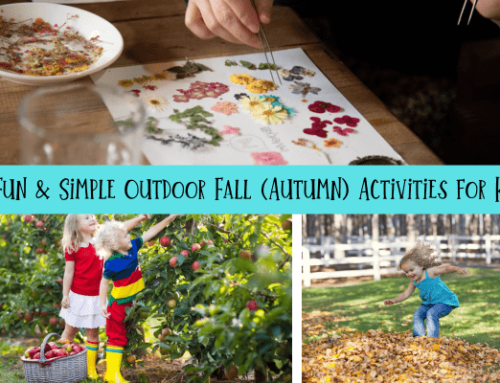
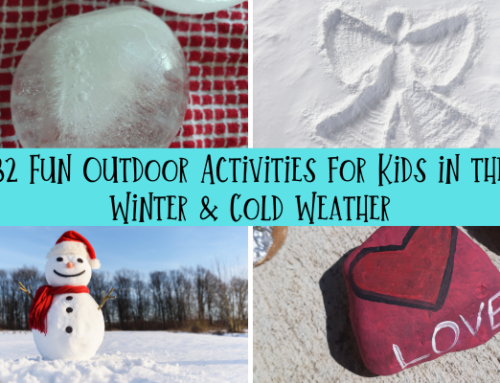
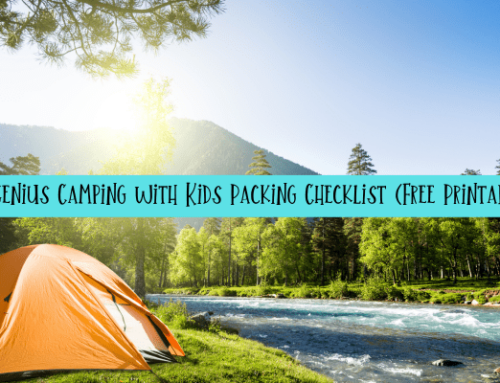

Leave A Comment